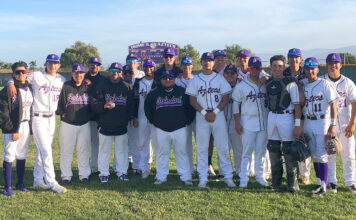SOLEDAD — Soledad High School is in the midst of its Western Association of Schools and Colleges (WASC) evaluation, and the mid-cycle results were recently presented to the Soledad School Board.
During the last WASC visit, Soledad High had a few recommendations for areas they needed to work on for the next visit. Those areas were to increase college readiness for all students by improving A-G completion rates. The second area was to increase math achievement for all students to problem solve and develop critical thinking. The final area was to improve outcomes for English Language Learners (ELL) by providing intensive support in English Language Arts.
The first area was successful, seeing a rise in A-G rate increase from 32 percent in 2015-16 to 45 percent in 2017-18 graduating classes. The number of A-G requirement classes rose by 25 percent and the number of classes increased from 59 to 74 classes.
The Advanced Placement courses also increased, with 13 classes meeting that criteria. The school added AP classes in biology, environmental science, computer science principles, computer science and studio art.
The second category to increase math achievement experienced a tougher go as the school reached out to consultants, incorporated a math lab and even tutoring. Although the early morning tutoring was unsuccessful, with few students taking advantage of the offering, the afternoon tutoring saw 14 to 16 students participating on Tuesday and Thursday afternoons.
The school’s math department is also part of a grant program with CSUMB that developed a math course for 12th-grade students. The math class is A-G complaint and provides an additional option for seniors besides AP statistics or calculus.
According to the WASC mid-cycle report, taking a fourth year math course will help students succeed in college, because with mathematics if you don’t use it, you lose it.
In the third category for English Language Learners, the high school added English lab classes to help support ELL students and general education students in need of intervention. The school has also identified different types of English learners, starting with ELD1, which is students who have lived in the country three years or fewer; EL is for students here for three to five years; and Long Term English Learners, who have lived here for five or more years.
ELL students benefit from writing exercises, effective student pairings and tutoring after school.
Soledad Unified School District Board Trustees reviewed the item at its meeting Feb. 13.










